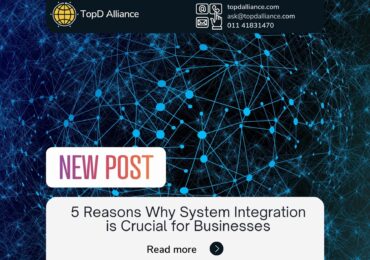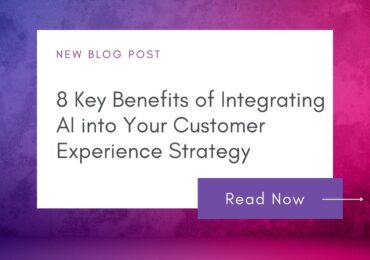In a world that is increasingly digitized, it’s important to understand the differences between digital and conventional marketing. Here are the top 10 differences between these two types of marketing. After reading this, you’ll have a better understanding of how to approach your marketing strategy.
Introduction
When it comes to marketing, businesses have a lot of options to choose from in terms of both traditional and digital methods. But what’s the most effective way to capture your audience’s attention? And what should businesses prioritize when allocating their marketing budget?
When trying to decide between traditional and digital marketing, several factors should be taken into consideration such as type of business, campaign budget and sales funnel. In this blog, we’ll do a comparative analysis between conventional and digital marketing to help you determine which marketing strategy is the best fit for your business.
Table of Content
- Conventional Marketing Features Tangible Mediums
- Digital Marketing Is More Cost-Effective:
- Digital Marketing Gives Prompt Data Analysis:
- Conventional Marketing Interacts Less With Customers
- Digital Marketing Features Two-way Communication
- Digital Marketing Features Better Optimization
- Digital Marketing Offers Competitive Analysis
- Conventional Marketing Has Fewer Security Concerns
- Digital Marketing Targets Generation Z
- Digital Marketing Offers Skip-able Advertisements
Main Content
Conventional Marketing Features Tangible Mediums
Reaching audiences is the most important difference between digital and traditional marketing. Traditional marketing uses conventional methods of advertising, including print media such as newspapers and magazines, to reach consumers.
This mostly includes ads that are visually appealing or create an emotional response. It also uses electronic media, like TV and radio, which can be more expensive than print media.
Digital marketing is all about using technology to reach consumers. And because it’s so accessible, it can reach a wide range of consumers. Plus, the ads can be customized to match what the customers are interested in. So, if someone’s searching for their next travel destination, they’ll only see relevant ads for things like discounts, hotel promotions, and travel guides.
Digital Marketing Is More Cost-Effective:
Marketing through traditional means is quite costly because:
- It uses expansive media (print and electronic).
- The ads are shown to everyone, summing up into a high cost. (They are not targeted)
For example, sending brochures to hundreds of prospects might sound convincing to increase brand or product awareness; however, it is costly because of the paper and ink required. On the other hand, online marketing sends advertisements to potential customers using technology which is cost-saving in several ways.
Most importantly, it doesn’t require printing systems or papers to get the ads on tangible media like brochures would. Also, these online ads are targeted, so you’re only spend money when customers take a desired action on the ads – whether it’s clicking through to your website or making a purchase.
Digital Marketing Gives Prompt Data Analysis:
When you’re investing money into marketing, you want to be sure that it’s effective and going to produce results. Unfortunately, with traditional marketing methods it can be difficult to measure how successful it is because there’s no definite way to tell if the campaign worked or if it was the ad that encouraged consumers to visit the business.
Marketers can never know for certain, and this lack of knowledge can often lead to failed campaigns and wasted investments.
On the other hand, if you launch an online marketing campaign, you can more easily identify if your campaign is achieving its goals. This alone makes digital marketing more effective than its traditional counterpart.
Marketing via digital media also provides a more immediate analysis of campaigns, which can be useful for determining what is working and what should be tweaked immediately.
Conventional Marketing Interacts Less With Customers
The interaction between marketers and consumers is more passive in traditional marketing. For example, commercials on print and electronic media are one-sided where viewers can see the content but don’t have the opportunity to give feedback or reply.
However, there is some interaction involved via customer care within scheduled hours, though it is limited.
A brand that interacts with its customers through an online platform can do so at any time of day, as opposed to a time-sensitive method like television or print advertisements.
This is because a company’s website or social media account is available to customers 24/7, where they can ask questions or make comments about a product. These interactions can be managed by chat bots or online representatives.
Digital Marketing Features Two-way Communication:
Conventional marketing is a one-way street where businesses advertise to customers with no way of gauging how they feel or what they think. This type of marketing is very outdated and doesn’t provide customers with the feeling that their voices are being heard.
Online marketing, on the other hand, is a two-way conversation between business and customer that allows for feedback and engagement. This type of marketing fosters a more trusting relationship between company and consumer.
Digital Marketing Features Better Optimization
Traditional marketing offers fewer options for optimization when compared to digital marketing. Most ads lack a personalized touch, making it difficult to connect with your target audience. Additionally, once an advertisement has been broadcast, there is little that can be done to optimize it.
The results of your campaign can only be used to optimize your later campaigns – which may take months.
Digital marketing is an ever-evolving field that offers ample opportunities for optimization. There are several platforms that offer analysis which helps you understand your campaigns better and what needs to be changed.
What’s more, you can tweak your ads while your campaign is running to ensure maximum efficacy. In conclusion, digital marketing features real-time analysis and optimization of the campaigns – making it a powerful tool for businesses.
Digital Marketing Offers Competitive Analysis
Digital marketing offers businesses a unique advantage when it comes to tracking their competitors’ marketing efforts. With the right tools, companies can monitor their competitors’ content, strategies, and campaigns online, giving them a leg up in the race to stay ahead of the competition.
Traditional media lacks this level of transparency, so a marketer will not be able to figure out the upcoming campaign of their competitors unless they are out and successful.
Conventional Marketing Has Fewer Security Concerns
Although digital marketing is convenient and can be accessed by anyone with an internet connection, online platforms are unfortunately susceptible to security threats in the form of hacking and malware.
This means that ads might require your consumers’ data, and if your competitors gain access to this information, they could create ads that are more relevant to your target audience. Traditional marketing does not store any information online, so security concerns are nearly non-existent.
Digital Marketing Targets Generation Z
Traditional marketing and online marketing differ in how they target audiences. If your brand is trying to reach older prospects, a conventional method such as print media (e.g. newspapers and billboards) may be more effective. Traditional marketing is also beneficial when advertising regionally, as businesses can use posters, referrals, and sign boards to target a local audience.
On the other hand, millions of young adults use their phones and see social media advertisements every day. Therefore, digital marketing is more likely to reach a younger audience using these platforms. Additionally, digital marketing allows you to engage a global audience more easily because the channels used to attract customers are more accessible globally.
Digital Marketing Offers Skip-able Advertisements
Electronic advertisements can be intrusive, and consumers can’t skip them when they are trying to do something else. However, users have the freedom to choose whether or not to see the ad on digital platforms, which gives them more control than conventional media.
Conclusion
Even though many companies still rely on traditional marketing methods, digital marketing is the future. It not only keeps up with current generations but is also more efficient and cost-effective than traditional marketing. However, the most successful businesses use a combination of both methods to promote their company.
We hope you enjoyed the blog about Top 10 Differences Between Conventional And Digital Marketing. We are always excited to be able to provide you with new information, so if you have any questions or concerns, please do not hesitate to contact us and we would be happy to help.






